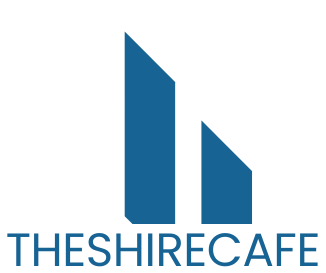Navigating the world of home loans can feel like trying to solve a Rubik’s Cube blindfolded. Among the many terms that can leave potential buyers scratching their heads, the FHA housing expense ratio stands out like a neon sign in a dimly lit room. This crucial metric helps determine how much of a borrower’s income goes toward housing costs, and understanding it can be the difference between getting the keys to a cozy abode or being stuck in rental limbo.
Table of Contents
ToggleUnderstanding FHA Housing Expense Ratio
FHA housing expense ratio plays a crucial role in evaluating a borrower’s financial capacity. This ratio measures how much of a borrower’s monthly income goes toward housing costs.
Definition of FHA Housing Expense Ratio
FHA housing expense ratio represents the percentage of gross monthly income allocated to housing-related expenses. These expenses typically include mortgage payments, property taxes, homeowners insurance, and mortgage insurance premiums. Calculating this ratio involves dividing total housing expenses by gross monthly income, resulting in a clear indication of affordability. For example, if someone earns $5,000 monthly and has housing costs totaling $1,500, the housing expense ratio would be 30%.
Importance of the Expense Ratio in FHA Loans
The expense ratio significantly influences the chances of securing an FHA loan. Lenders often look for expense ratios below 31%, as higher percentages may indicate potential financial strain. Maintaining a low expense ratio helps in obtaining favorable loan terms and lower interest rates. Additionally, keeping the ratio in check allows borrowers to manage their budget effectively, paving the way for homeownership. Overall, understanding and managing this ratio is vital for anyone considering an FHA-backed mortgage.
How the FHA Housing Expense Ratio Works
The FHA housing expense ratio plays a vital role in determining a borrower’s housing affordability. This ratio provides insight into the percentage of income devoted to housing-related expenses.
Calculation of the Expense Ratio
Calculating the FHA housing expense ratio involves dividing total monthly housing costs by the borrower’s gross monthly income. Total housing costs include mortgage payments, property taxes, homeowners insurance, and mortgage insurance premiums. For instance, if monthly housing expenses amount to $2,000 and gross monthly income is $6,000, the calculation is straightforward: $2,000 divided by $6,000 equals approximately 33%. Lenders generally prefer this ratio to be below 31% to lessen potential financial strain on the borrower.
Factors Influencing the Expense Ratio
Several factors influence the FHA housing expense ratio. Income stability significantly affects it; higher and more consistent incomes typically support a lower ratio. Expenses like property taxes and insurance premiums can vary widely across different regions, impacting the overall calculation. Additionally, current mortgage interest rates directly influence monthly payments, altering a borrower’s ratio. The type of loan, credit score, and down payment also play crucial roles in shaping the expense ratio, making it essential for prospective buyers to consider these variables in their housing plans.
Implications of the FHA Housing Expense Ratio
The FHA housing expense ratio holds significant implications for potential homebuyers. Lenders utilize it to assess a borrower’s financial capacity.
Loan Approval Process
An FHA housing expense ratio that exceeds 31% may complicate the loan approval process. Lenders view lower ratios as a sign of financial stability. They often favor borrowers demonstrating manageable housing expenses relative to their income. Evaluating this ratio helps lenders mitigate risk in approving loans. While exceptions exist, such as for borrowers with strong credit histories, maintaining a low ratio generally supports better chances for approval.
Impact on Borrower Eligibility
Higher FHA housing expense ratios directly affect borrower eligibility. Borrowers exceeding the recommended 31% face challenges in qualifying for favorable loan terms. Those with lower ratios often secure better interest rates and terms, enhancing affordability. Income stability and credit scores influence these outcomes significantly. Planning effectively for housing expenses increases the likelihood of meeting lender requirements.
Tips for Managing Your FHA Housing Expense Ratio
Effective management of the FHA housing expense ratio plays a vital role in homeownership success. Here are strategies to consider.
Budgeting for Housing Costs
Creating a detailed budget is pivotal in managing housing costs. Start by assessing all housing expenses, such as mortgage payments, property taxes, insurance premiums, and upkeep costs. Track monthly income diligently to determine the maximum affordable amount for housing. Allocate roughly 31% of gross income towards housing expenses for optimal ratio results. Regular evaluations of expenses can help identify areas for savings, ensuring that housing costs stay within comfortable limits.
Reducing Your Expense Ratio
To reduce the FHA housing expense ratio, consider multiple approaches. Increasing income through side jobs or promotions effectively boosts the monthly amount available for housing. Refinancing existing loans may lower mortgage payments significantly, reducing overall housing costs. Adjusting home buying expectations by considering less expensive properties can also pay off. Applying a larger down payment decreases the loan amount and may further assist in lowering the expense ratio. Each step taken to enhance financial stability positively impacts the housing expense ratio and loan approval chances.
Understanding the FHA housing expense ratio is vital for anyone considering homeownership. By keeping this ratio below 31%, potential buyers can improve their chances of securing favorable loan terms and lower interest rates. Effective budgeting and careful planning can help manage housing costs and ensure financial stability.
By being proactive in assessing income and expenses, borrowers can make informed decisions that align with their financial goals. Ultimately, a solid grasp of the FHA housing expense ratio empowers individuals to navigate the home buying process with confidence and clarity.



